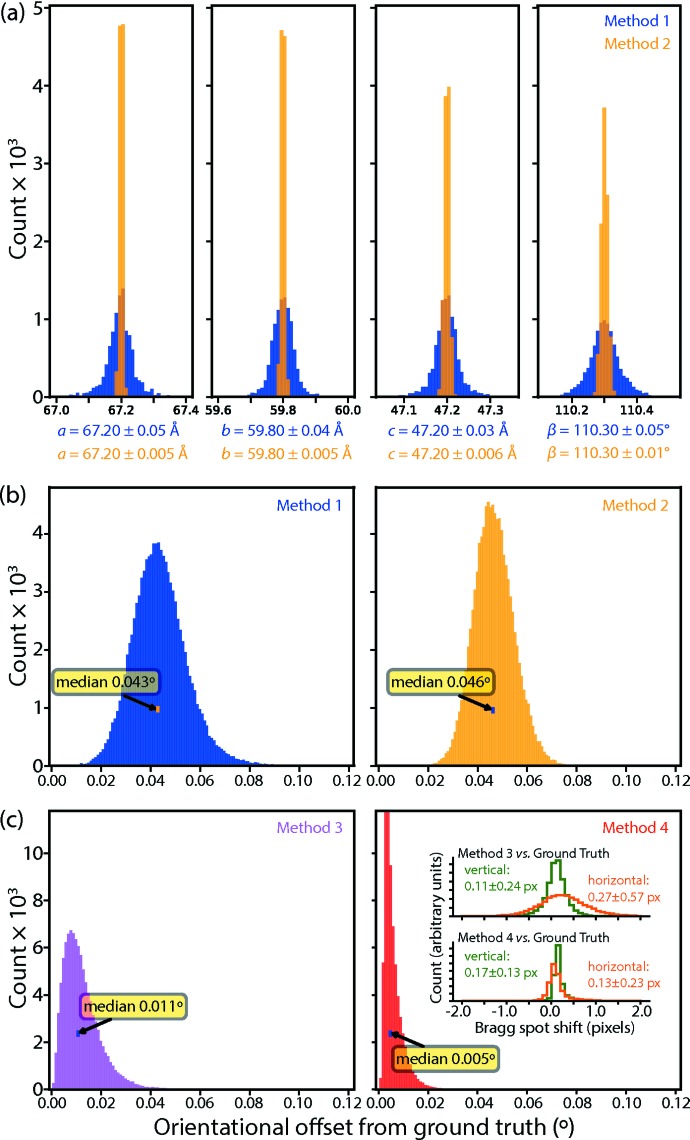Figure 6.
Comparison of refined crystal models against ground truth. (a) Distribution of unit-cell parameters. Method 1 (blue), parameters are fit freely with DIALS against the bright spot positions; Method 2 (orange), tight restraints are applied for DIALS refinement: a = 67.2 ± 0.002, b = 59.8 ± 0.002, c = 47.2 ± 0.002 Å, β = 110.3 ± 0.0034°. (b) and (c) Distribution of angular offsets of the unit-cell basis vectors (averaged over a, b and c for each lattice), in comparison with the ground truth. Specifically, this refers to the ‘fine-grained’ ground truth, which is the average over all 25 A*D matrices shown in Fig. 2 ▸, which is about 0.0077° offset from the ‘coarse-grained’ ground truth that is simply the randomly oriented A* constructed as input to the simulation. In Method 3 (magenta), the corrected detector position (1/2 pixel horizontal and vertical offsets) is provided prior to DIALS refinement, and in Method 4 (red), optimized rotational perturbations are applied to align the nanoBragg-predicted spot profiles with the ground truth data images (Appendix B ). Insets show the distribution of positional offsets of the Bragg spots in the Fig. 4 ▸ region of interest, comparing either Method 3 or Method 4 with the ground truth.

